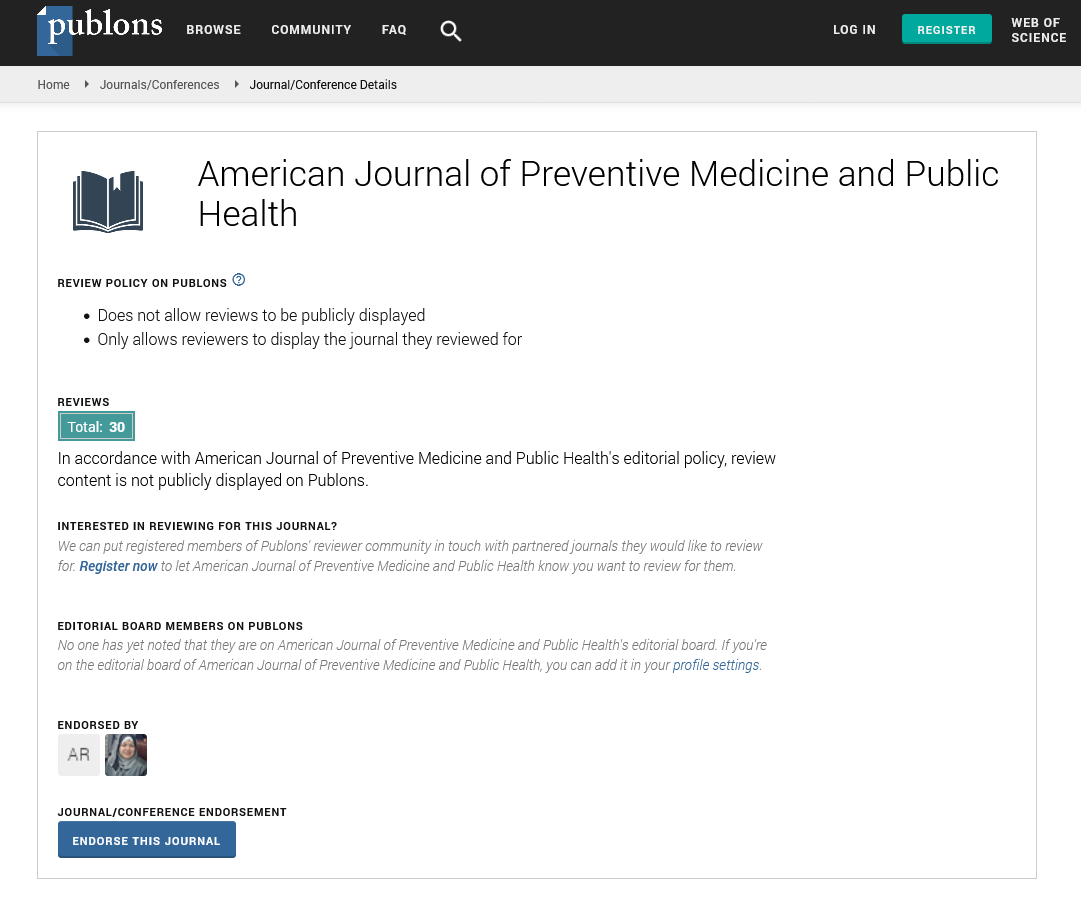Commentary - American Journal of Preventive Medicine and Public Health (2023)
Isoniazid Preventive Therapy: A Key Factor in Tuberculosis Control
R Wood*R Wood, Department of Community Medicine, Burdwan Medical College and Hospital, Burdwan, India, Email: woodr89r20@gmail.com
Received: 04-Jul-2023, Manuscript No. AJPMPH-23-109635; Editor assigned: 06-Jul-2023, Pre QC No. AJPMPH-23-109635 (PQ); Reviewed: 20-Jul-2023, QC No. AJPMPH-23-109635; Revised: 27-Jul-2023, Manuscript No. AJPMPH-23-109635 (R); Published: 03-Aug-2023
Description
Tuberculosis (TB) remains one of the most signifi-cant global health challenges, affecting millions of people each year. While effective treatments are available, the rise of drug-resistant strains and the persistence of latent TB infections necessitate a multi-pronged approach to combat the disease. One crucial strategy in TB prevention and control is Isoniazid Preventive Therapy (IPT). IPT is a cost-ef-fective and potent intervention that helps reduce the risk of developing active TB in individuals with latent TB infection.
History of isoniazid preventive therapy
Isoniazid, an antimycobacterial agent, was discov-ered in the early 1950s as a potent medication to treat active tuberculosis. Soon afterits introduction, researchers recognized its potential in preventing TB in individuals with latent infections. The con-cept of using IPT emerged in the 1960s, and by the 1980s, clinical trials provided compelling evidence of its effectiveness in preventing the progression of latent TB to active disease. The World Health Or-ganization (WHO) subsequently endorsed IPT as a key strategy to control TB in high-burden countries.
Mechanism of action: Isoniazid functions by in-hibiting the synthesis of mycolic acids in the cell wall of Mycobacterium tuberculosis, the bacterium responsible for causing TB. Mycolic acids are es-sential components of the bacterial cell wall, and their inhibition weakens the protective barrier of the bacterium, rendering it more susceptible to im-mune responses and, consequently, reducing the risk of active TB development. IPT’s mechanism is particularly valuable in individuals with LTBI, as it targets the latent bacteria before they have the op-portunity to trigger active disease.
Effectiveness of isoniazid preventive therapy: Multiple clinical trials and real-world studies have demonstrated the effectiveness of Isoniazid Pre-ventive Therapy in reducing the incidence of active TB. When administered appropriately, IPT can low-er the risk of TB reactivation by up to 90%. More-over, IPT has proven to be especially beneficial in specific high-risk populations, such as people liv-ing with HIV, where the risk of TB reactivation is substantially higher. By preventing TB in these vul-nerable groups, IPT plays a vital role in reducing TB-related morbidity and mortality.
Challenges in implementing isoniazid preven-tive therapy
While Isoniazid Preventive Therapy holds signifi-cant promise, its widespread implementation faces several challenges:
Latent TB diagnosis: Identifying individuals with latent TB infection remains a primary hurdle. Con-ventional tuberculin skin tests and interferon-gam-ma release assays (IGRAs) are not always accessi-ble or affordable in resource-limited settings.
Drug resistance: As with any antimicrobial agent, there is a risk of developing drug-resistant strains when IPT is used improperly or inconsistently. It underscores the importance of accurate diagnosis, proper prescription, and patient adherence.
Duration of treatment: Isoniazid is typically ad-ministered as a daily therapy for six to nine months. Maintaining patient adherence for such an extend-ed period can be challenging, leading to incomplete treatment and reduced effectiveness.
Adverse effects: While Isoniazid is generally well-tolerated, some individuals may experience adverse effects, including liver toxicity. Regular monitoring is necessary to detect and manage any potential side effects.
Program implementation: Integrating IPT into existing healthcare programs requires coordination between TB control programs and other healthcare services, such as HIV care. This can be complex and may vary depending on the local healthcare infra-structure.
To address these challenges and maximize the im-pact of Isoniazid Preventive Therapy, several strat-egies can be employed:
Improved diagnostic tools: Investing in afford-able and accurate diagnostics for latent TB infec-tion can enhance the identification of individuals who would benefit from IPT.
Shorter treatment regimens: Research into short-er, well-tolerated regimens could improve patient adherence and, consequently, the overall effective-ness of IPT.
Patient education and adherence support: Edu-cating patients about the importance of completing their IPT regimen and providing adherence support can enhance treatment completion rates.
Healthcare system integration: Coordinating TB control programs with other healthcare services, such as HIV care and maternal and child health pro-grams, can facilitate the implementation of IPT in high-risk populations.
Research and innovation: Continued research into new and improved preventive therapies, as well as better understanding of TB pathogenesis, will aid in developing more effective strategies to combat the disease.
Isoniazid Preventive Therapy has emerged as a cor-nerstone in tuberculosis control, offering a potent and cost-effective means to prevent the progres-sion of latent TB to active disease. Its effectiveness, especially in high-risk populations, cannot be un-derstated. However, successful implementation relies on addressing challenges related to diagno-sis, adherence, and healthcare system integration. By investing in innovative research, bolstering healthcare infrastructure, and promoting patient education and support, IPT can play a pivotal role in reducing the global burden of tuberculosis and moving towards the ultimate goal of TB eradication







